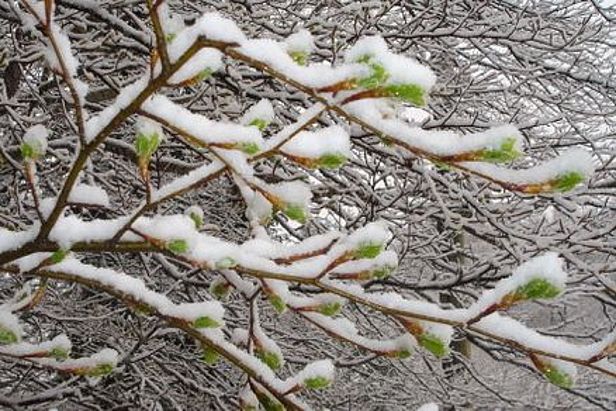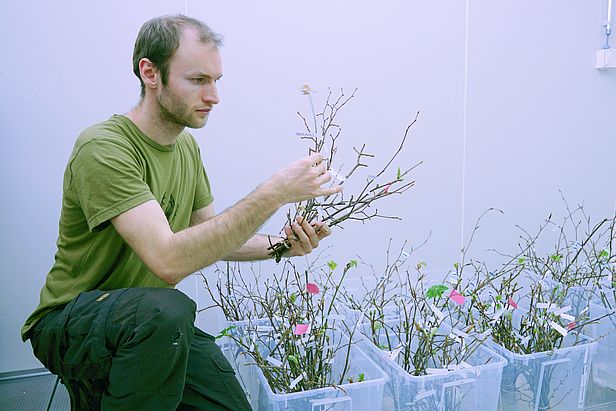08.04.2021 | Nancy Bolze | News WSL
Spring is when the trees start to turn green again – but until now it was not known exactly what temperatures are needed, and for how long, in order for their buds to open. Three researchers from the Swiss Federal Institute for Forest, Snow and Landscape Research (WSL) have now determined the cold periods required for six common forest-tree species. As the climate warms, some tree species at their southern limit of distribution may find it too mild to sprout at all.
Bud burst is a tricky time for trees: too early and late frosts could seriously damage the tree, too late and it misses out on the best growing conditions. Until now it was known that trees wake from their winter dormancy if they are exposed to temperatures just above freezing for a certain length of time. This is known as 'chilling'. Day length also plays a role. While these processes have been well researched in fruit trees, little is known about them in forest trees.
WSL ecologists Frederik Baumgarten and Yann Vitasse investigated the exact temperature range of chilling for individual tree species and how long the chilling has to last. To do this, the pair cut off around 1,200 branches from six deciduous forest-tree species common in our latitudes (birch, larch, lime, maple, oak and beech). In climate chambers, they exposed these branches to different temperatures for various periods of time to simulate the chilling process. They then observed how the buds opened at temperatures of between -2 °C and +10 °C with subsequent warming to 20 °C.
Chilling gives the starting signal
The researchers came to a surprising conclusion: the length of time that buds undergo freezing temperatures is more important for ending dormancy than previously assumed. The buds are thus subject to a protective mechanism that prevents the leaves from sprouting after a warm winter period when there is still a high risk of fatal overnight frost. However, the entire temperature range examined, from -2 °C to +10 °C, contributes to the overall chilling process.
Bud burst in a changing climate
Will global warming affect the end of forest-tree dormancy in temperate latitudes? Not in the foreseeable future, according to Frederik Baumgarten: "Only the order in which the individual tree species turn green in spring will change as the climate gets warmer." For example, the warmth-loving oak would have a head start over the lime and maple, which tend to benefit from freezing temperatures (e.g. -2 °C). "But at the southern limit of distribution, it could actually be that some species even sprout later or don't sprout fully, as future winters won't be cold enough there," predicts Baumgarten.
The new findings will now be used to improve mathematical models for spring bud burst. Scientists use these models to predict vegetation development over time as a result of climate changes.
Contact
Publications
Copyright
WSL and SLF provide the artwork for imaging of press articles relating to this media release for free. Transferring and saving the images in image databases and saving of images by third parties is not allowed.


